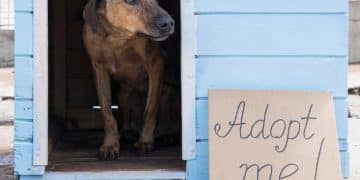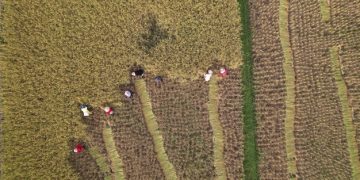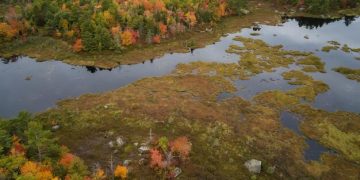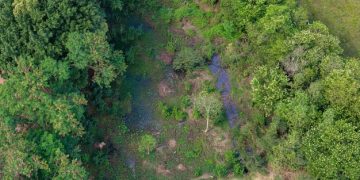Indigenous Communities and Wildlife Management: Insider Knowledge
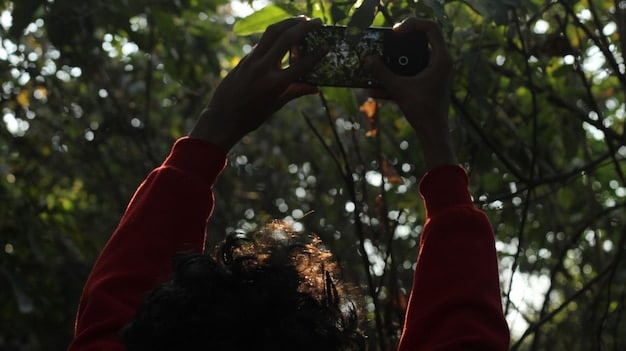
Insider knowledge highlights the crucial role indigenous communities play in wildlife management, offering unique perspectives and sustainable practices for conservation efforts.
Understanding the role of indigenous communities in wildlife management is crucial for effective conservation. Their insider knowledge, accumulated over generations, provides invaluable insights into ecosystems and animal behavior, enhancing conservation efforts.
The Historical Connection Between Indigenous People and Wildlife
Indigenous communities have maintained a deep, historical connection with wildlife, shaping their cultures and livelihoods for centuries. This relationship is rooted in respect and sustainable resource management, offering valuable lessons for modern conservation.
Traditional Ecological Knowledge (TEK)
TEK is a cumulative body of knowledge, practices, and beliefs evolved by indigenous people through generations of direct contact with the environment. It encompasses a deep understanding of local ecosystems, animal behavior, and sustainable resource use.
Sustainable Practices Through Generations
For centuries, indigenous communities have practiced sustainable methods of hunting, fishing, and land management, ensuring the long-term health of ecosystems and wildlife populations. These practices are often embedded in cultural traditions and governance systems.
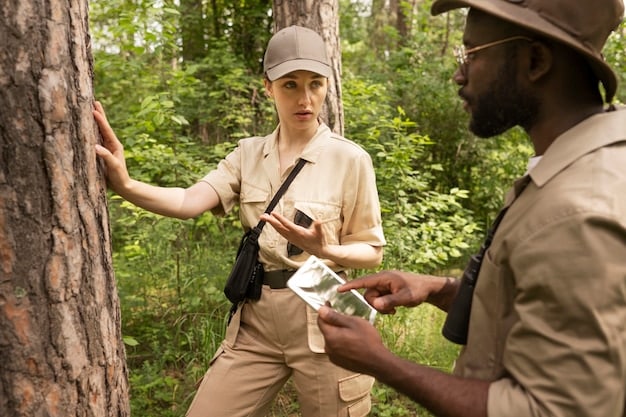
- Rotational Harvesting: Moving hunting and gathering efforts between different areas to prevent over-exploitation.
- Controlled Burns: Using fire to maintain biodiversity and reduce the risk of large wildfires.
- Respectful Hunting Protocols: Following ethical guidelines that prioritize the wellbeing of animals and the sustainability of populations.
The historical connection between indigenous people and wildlife isn’t just a story of the past; it’s a living tradition that continues to evolve and offer profound insights for our current conservation challenges. By understanding and respecting this connection, we can create more effective and equitable conservation strategies.
The Benefits of Incorporating Indigenous Knowledge
Incorporating indigenous knowledge into wildlife management brings a host of benefits. Their unique perspectives and sustainable practices can lead to more effective conservation strategies, improved community engagement, and enhanced biodiversity protection.
More Accurate Data and Monitoring
Indigenous communities often possess detailed, localized knowledge about wildlife populations, migration patterns, and habitat use that can complement scientific data. This insider knowledge can enhance the accuracy and effectiveness of monitoring efforts.
Enhanced Community Engagement and Stewardship
Involving indigenous communities in wildlife management fosters a sense of ownership and stewardship over natural resources. This leads to greater community participation in conservation initiatives and improved outcomes.

- Improved Data Collection: Utilizing community-based monitoring programs to gather data on wildlife populations and habitat conditions.
- Collaborative Planning: Involving indigenous representatives in the design and implementation of conservation plans.
- Knowledge Sharing: Facilitating the exchange of information between indigenous communities, scientists, and policymakers.
By valuing and integrating indigenous knowledge, we can unlock new insights and approaches to wildlife management, creating more sustainable and equitable conservation solutions that benefit both people and nature. This is a critical step towards building resilient ecosystems that support biodiversity and human wellbeing.
Challenges and Solutions in Collaboration
Collaborating with indigenous communities in wildlife management can present several challenges, including conflicting priorities, power imbalances, and cultural misunderstandings. However, by addressing these challenges with sensitivity and innovative solutions, we can foster genuine partnerships and achieve mutual goals.
Addressing Power Imbalances
It’s essential to recognize and address historical power imbalances that may exist between indigenous communities and external organizations. This involves ensuring that indigenous voices are heard and respected in decision-making processes.
Cultural Sensitivity and Respect
Effective collaboration requires a strong commitment to cultural sensitivity and respect. This includes understanding and valuing indigenous worldviews, traditions, and governance systems.
Open communication, mutual respect, and a willingness to learn from each other are essential ingredients for successful collaboration. By building trust and working together as equal partners, we can overcome challenges and achieve meaningful conservation outcomes. The long-term success of wildlife management depends on inclusive and equitable partnerships that recognize the vital role of indigenous communities.
Case Studies: Successful Indigenous-Led Conservation
Numerous case studies demonstrate the success of indigenous-led conservation initiatives around the world. These examples highlight the power of traditional knowledge and community-based approaches to protect wildlife and ecosystems.
The Great Bear Rainforest, Canada
The Great Bear Rainforest in British Columbia is a prime example of successful indigenous-led conservation. Through collaborative agreements, First Nations communities have played a key role in protecting the region’s biodiversity, including its iconic spirit bears.
Namibia’s Community-Based Natural Resource Management (CBNRM)
Namibia’s CBNRM program has empowered local communities to manage and benefit from their natural resources, including wildlife. This has led to increased conservation efforts and improved livelihoods.
The success stories of indigenous-led conservation initiatives provide valuable lessons for other regions and inspire hope for the future. These examples demonstrate that by recognizing and supporting the role of indigenous communities, we can achieve significant progress towards protecting our planet’s precious biodiversity.
Policy Frameworks Supporting Indigenous Involvement
Supportive policy frameworks are essential for promoting indigenous involvement in wildlife management. These frameworks should recognize indigenous rights, support community-based conservation, and promote equitable partnerships.
International Agreements and Declarations
Several international agreements and declarations, such as the United Nations Declaration on the Rights of Indigenous Peoples (UNDRIP), recognize the importance of indigenous participation in natural resource management.
National Legislation and Regulations
Many countries have implemented national legislation and regulations that support indigenous land rights and promote community-based conservation. These policies can provide a legal framework for collaborative management and benefit-sharing.
| Key Point | Brief Description |
|---|---|
| 🌿 TEK Importance | Traditional Ecological Knowledge offers invaluable insights. |
| 🤝 Collaboration | Partnerships are crucial for effective wildlife management. |
| 🌍 Case Studies | Successful initiatives show the power of indigenous leadership. |
| 📜 Policy Support | Frameworks support indigenous involvement in conservation. |
Frequently Asked Questions
▼
Indigenous knowledge provides unique insights into ecosystems, animal behavior, and sustainable practices, enhancing conservation efforts.
▼
Challenges include addressing power imbalances, cultural sensitivity, and ensuring indigenous voices are heard in decision-making.
▼
The Great Bear Rainforest in Canada demonstrates successful indigenous-led conservation through collaborative agreements and biodiversity protection.
▼
Policy frameworks should recognize indigenous rights, support community-based conservation, and promote equitable partnerships for sustainable management.
▼
TEK is a cumulative body of knowledge and practices developed by indigenous people through generations of interaction with their environment.
Conclusion
In conclusion, recognizing and integrating the valuable insider knowledge held by indigenous communities is paramount for effective wildlife management and conservation. By fostering equitable partnerships, respecting cultural heritage, and supporting community-led initiatives, we can create a more sustainable future for both people and wildlife.
